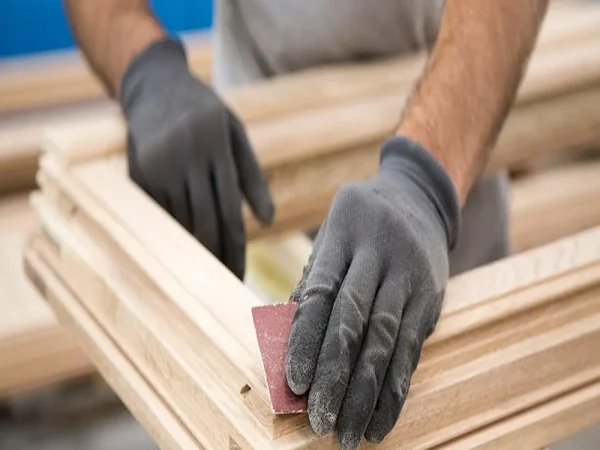Effective Strategies for Fire Damage Restoration in North Sound
The Importance of Swift Action: Why Every Minute Counts in Water Damage Restoration
Understanding the Water Damage Timeline: How Fast is Too Slow?
Water damage can occur due to various reasons, such as burst pipes, flooding, or heavy rain, and the speed at which you respond can significantly influence the extent of the damage. Studies show that water begins to cause damage within minutes of exposure; within the first hour, drywall starts absorbing moisture and can become irreparably damaged. Within the first 24 hours, mold spores can begin to develop, potentially leading to costly health issues and structural damage. Therefore, the mantra “time is money” rings painfully true in the context of water damage restoration. When water inundates your space, it brings with it various challenges from initial structural integrity concerns to long-term health implications, notably related to mold formation if not addressed promptly. This section aims to outline precisely how critical it is to act swiftly and efficiently during the aftermath of a water incident and provides actionable insights into establishing a rapid response framework.
Emergency Response Plans: Preparing for the Unexpected
Creating an effective emergency response plan tailored to your property can be your first line of defense against unexpected water incursions. Start by conducting a thorough risk assessment of your home or commercial space to identify potential vulnerabilities such as aging plumbing, problematic appliances, or poorly graded landscaping that could lead to water accumulation. Develop a checklist that includes vital contacts such as local water damage restoration services, friends or family who can assist, verification of your insurance coverage, and steps to take in case of an emergency. It’s prudent to conduct drills periodically to ensure everyone in your household or workplace understands their roles should disaster strike. Keeping essentials like high-powered pumps, wet vacs, a first aid kit, and absorbent towels handy can considerably reduce response time after a water event. Through strategic preparedness, you can drastically improve recovery outcomes and minimize losses.
The Role of Professionals: When to Call in the Experts
Even with an emergency plan in place, some water damage encounters necessitate expert intervention. Understanding when to call in professionals is crucial not just for effective restoration but also for guaranteeing safety and ensuring that no long-term damage is overlooked. If you find yourself dealing with extensive flooding, or contamination caused by sewer backups, or if the damage has affected your building’s structural integrity, professional help will usually be required. Certified restoration companies have access to advanced equipment that far exceeds homeowner capabilities, including industrial-strength dehumidifiers, thermal imaging cameras for detecting hidden moisture, and specialized drying systems. Furthermore, their experience allows them to navigate the peculiarities of insurance claims, alleviating additional stress during such tough times. Homeowners should recognize the signs that indicate that professional intervention is not just recommended but necessary for achieving a comprehensive recovery.
From A to Z: The Water Damage Restoration Process Explained
Assessment and Inspection: Identifying the Root of the Problem
The first step in a water damage restoration process is a detailed assessment to gauge the extent of the damage. Professional restoration teams employ cutting-edge moisture detection tools to perform a full inspection that identifies wet building materials and checks for contamination. Understanding the water category, whether it’s clean, gray, or black, is crucial to determining the best course of action. Clean water from a burst pipe poses fewer health risks than water that comes from sewage backups or heavy floods, which are considered black water. After evaluating the damage, professionals devise a strategic restoration plan that prioritizes the most urgent repairs and outlines actions tailored to the specific circumstances of the property. It’s important to know that neglecting this thorough assessment phase can lead to missed damages, particularly in wall cavities and under flooring, which can create health hazards later on.
Water Extraction Techniques: What Works Best?
Once the assessment is completed, the next step is effective water extraction. The timeliness of this process is critical; more time spent sitting gives the water a chance to cause additional damage. Professionals utilize heavy-duty pumps and vacuums designed specifically for large-scale extraction. Depending on the volume of water and the type of structure, technicians will choose among submersible pumps, truck-mounted units, or industrial wet vacuums. Each of these tools serves to rapidly diminish the standing water and, therefore, initiate the drying process sooner. Additionally, this step may involve utilizing tools like air movers to facilitate evaporation from surfaces and hard-to-reach areas. Homeowners need to understand that thorough extraction not only limits material damage but is also a precursor to effective drying, which is essential for preventing mold growth.
Drying and Dehumidification: The Science Behind Effective Restoration
After water extraction, a comprehensive drying and dehumidification stage begins, which is key to maintaining a high-quality outcome during restoration. Simply applying fans or increasing airflow may not suffice. Restoration professionals deploy industrial-strength dehumidifiers that extract moisture from the air efficiently, ensuring that all areas, especially those that are less visible, are adequately dried. This stage operates on the principle of achieving equilibrium between ambient humidity and moisture levels within walls and flooring. Generally, a desired dry standard is to lower relative humidity to around 30-50{2ceda02908de20a26507b877c3a53f9eb29bf75ecf243c6188e49c995af7d5a4} to inhibit subsequent mold growth and maintain a health-positive environment. Understanding the drying timeline is essential, as various materials like hardwood vs. drywall will have different drying rates, thus requiring diligent monitoring. The corrective actions taken during this phase directly correlate with the long-term viability of your property’s structures and the comfort and safety of its inhabitants going forward.
Preventative Measures: Safeguarding Your Property Against Future Water Damage
Common Causes of Water Damage: What to Watch Out For
Understanding the common causes of water damage is essential for proactive prevention. Beyond natural disasters, everyday actions can inadvertently lead to a potential water crisis. Regular inspections of plumbing systems, including checking for leaks in pipes, faucets, and appliances, can prevent costly catastrophes before they happen. Monitor the condition of your roof, especially after heavy storm seasons, to catch wear and degradation early. Landscaping can also play a significant role in preventing water buildup; proper grading away from foundations and well-placed gutters diverting rainfall can save your home from significant water issues. In addition, seasonal maintenance, such as flushing out sump pumps, checking indoor humidity levels, and routinely cleaning out debris from drainage systems, can provide an extra layer of protection. By being aware of these common pitfalls, homeowners can establish a proactive approach to safeguarding their properties.
Home Maintenance Tips: Keeping Water at Bay with Simple Adjustments
Maintaining your home doesn’t always require sweeping renovations; sometimes, it’s all about the smaller adjustments. Regularly inspect and repair any leaks as soon as they are noticed this includes not just visible leaks but also signs of water stains, moldy areas, or musty odors that can occur in basements and attics. Moreover, consider investing in technologies like smart leak detectors that alert you to issues even when you aren’t home, giving you real-time updates and enabling quicker responses. Additionally, ensure that gutters are well-maintained to avoid blockages; installing gutter guards can minimize the buildup of leaves and debris. If your home comprises a basement, consider utilizing waterproofing measures along with sump pumps as added layers of defense. Each of these practices contributes to building a fortress against water damage and can pay dividends in your home’s long-term safety and value.
Innovative Technology in Water Damage Prevention: Smart Solutions for Modern Homes
The advent of smart home technology has brought a new frontier in water damage prevention. Benefits include smarter automated systems that can detect leaks and automatically shut off the water supply, thereby preventing a catastrophic water event before it gets a chance to escalate. Additionally, moisture sensors can be placed in susceptible areas, such as behind appliances, in crawl spaces, or under sinks, allowing homeowners to monitor their spaces effectively. Moreover, smartphone apps connected to home systems can send alerts straight to your device, providing real-time updates and enabling quicker decision-making in emergencies. Smart irrigation systems can also play a significant role in water conservation, ensuring overwatering doesn’t lead to inefficient drainage or flooding. Incorporating these innovative technologies can significantly alleviate water damage risks, making homes not only safer but also more energy-efficient.
Emotional Toll of Water Damage: Supporting Homeowners Through Restoration
The Unseen Stress: Coping with the Aftermath of Water Damage
The experience of water damage often extends beyond physical destruction; the emotional toll it takes can be profound and long-lasting. The anxiety, stress, and disruption make it hard for homeowners to navigate their next steps effectively. Emotional responses can range from a sense of loss over damaged possessions to the overwhelming feeling of navigating an insurance claim process. It’s critical that individuals impacted by water damage allow themselves the space to recognize and process these feelings. Acknowledging the emotional aspect is not merely a subplot but a vital part of recovery. Engaging in self-care practices whether through speaking with friends, participating in community support groups, or seeking professional guidance can significantly impact healing and restoration success. Those affected need to understand that they are not alone; the community is often willing to support and aid recovery efforts, and sharing experiences can foster resilience.
Community Resources and Support Systems: Finding Help Beyond the Damage
Finding a support network can often make an overwhelming experience for homeowners more manageable. Independence provides several community resources aimed at assisting those facing the fallout from water damage, including local non-profits and church organizations that may offer financial aid or volunteer support for relief efforts. Community workshops that focus on educating homeowners on emergency preparedness and restoration can be invaluable, enabling individuals to regain a sense of control and purpose post-disaster. Additionally, a variety of mental health professionals exist in proactive community mental health networks to support those struggling with the emotional ramifications brought about by such an incident, further emphasizing that mental wellness is as critical as physical restoration. Cultivating connections within the community can empower individuals as they rebuild their homes and lives after experiencing water damage.
Restoration Success Stories: Turning Disasters into Triumphs
To help foster hope amid the challenges of water damage restoration independence, it can be beneficial to look at stories of those who have successfully navigated their restoration journey. For instance, many individuals have reported how quick action and organized planning helped them recover their homes after severe flooding incidents, leading to a renewed appreciation for the importance of community and proactive measures in prevention. These stories often highlight how families not only restored their physical spaces but built stronger relationships as they went through the challenges together. Through such shared narratives, others can find inspiration and strategies to apply to their situations while reinforcing the resilience of the human spirit in overcoming seemingly insurmountable odds. The road may be tough, but ultimately, these examples demonstrate that disaster can lead to renewal and opportunity, transforming devastation into a chance for new beginnings.











